
HOME > Organization > Project1 Quantum Artificial Brain
Project1 Quantum Artificial Brain
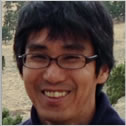
NTT Basic Research Laboratories
Hiroki Takesue
- Research Topics
- Quantum communication, quantum optics, nonlinear optics
- Laboratory HP
- http://www.brl.ntt.co.jp/people/htakesue/index.html
- Research Topics
- Quantum communication, quantum optics, nonlinear optics
- Laboratory HP
- http://www.brl.ntt.co.jp/people/htakesue/index.html
Educational Background
- 1994.3Bachelor's degree in engineering science in 1994 from Osaka University
- 1996.3Master's degree in engineering science in 1996 from Osaka University
- 2002.9Ph.D. in engineering science in 2002 from Osaka University
Professional Experience
- 1996-2003NTT Access Network Service Systems Laboratories
- 2003-presentNTT Basic Research Laboratories
- 2004-2005Visiting Scholar at E. L. Ginzton Laboratory, Stanford University
- 2014Visiting researcher at National Institute of Standards and Technology (NIST), Boulder
Major Award
- 2008TU-T Kaleidoscope Academic Conference, Best Paper Award
- 2010The Commendation for Science and Technology by the Minister of Education, Culture, Sports, Science and Technology: The Young Scientists’ Prize
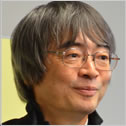
The University of Tokyo
Kazuyuki Aihara
- Research Topics
- Mathematical analysis on the brain, chaos, complex systems, and diseases.
- Laboratory HP
- http://www.sat.t.u-tokyo.ac.jp/index.html
- Research Topics
- Mathematical analysis on the brain, chaos, complex systems, and diseases.
- Laboratory HP
- http://www.sat.t.u-tokyo.ac.jp/index.html
Educational Background
- 1977B. Eng. at The University of Tokyo, Japan
- 1979M. Eng. at The University of Tokyo, Japan
- 1982Ph. D. at The University of Tokyo, Japan
Professional Experience
- 1982-1983Postdoctoral Research Fellow (Japan Society for the Promotion of Science) at The University of Tokyo, Tokyo, Japan
- 1983-1993Assistant Professor, Lecturer, Associate Professor at Tokyo Denki University, Japan
- 1993-1998Associate Professor at The University of Tokyo, Japan
- 1998-presentProfessor at The University of Tokyo, Japan
- 2010-presentDirector of Collaborative Research Center for Innovative Mathematical Modelling at The University of Tokyo, Japan
Major Award
- 1982Young Researcher Award, Japanese Society of Medical Electronics and Biological Engineering
- 1991Best Book Award for Technology and Science, Nikkan Kogyo Shinbun
- 1992AI Scientific Research Award, The International Foundation for Artificial Intelligence
- 1997Best Paper Award, Japanese Neural Network Society
- 2000Gold Medal Award, Tokyo Techno Forum 21
- 2003Academic Achievement Award, Artificial Life and Robotics (AROB)
- 2006Fellow of IEICE
- 2008Research Award, Japanese Neural Network Society
- 2008Honorary Professor, Shanghai University
- 2010Daiwa Adrian Prize
- 2014Best Paper Award, ISCIE
- etc.
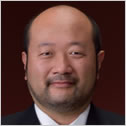
Tokyo Institute of Technology
Toru Aonishi
- Research Topics
- The coherent Ising machine (CIM) has attracted attention as one of the most effective Ising computing architectures for solving large scale optimization problems because of its scalability and high-speed computational ability. However, it is difficult to implement the Ising computation in the CIM because the theories and techniques of classical thermodynamic equilibrium Ising spin systems cannot be directly applied to the CIM. Now our research group attempts to adapt these theories and techniques to the CIM.
- Research Topics
- The coherent Ising machine (CIM) has attracted attention as one of the most effective Ising computing architectures for solving large scale optimization problems because of its scalability and high-speed computational ability. However, it is difficult to implement the Ising computation in the CIM because the theories and techniques of classical thermodynamic equilibrium Ising spin systems cannot be directly applied to the CIM. Now our research group attempts to adapt these theories and techniques to the CIM.
Educational Background
- 1993.3B.E. degree in control engineering from Kyusyu Institute of Technology, Fukuoka, Japan
- 1995.3M.E. degree in biophysical engineering from Osaka University, Osaka, Japan
- 1998.3D.E. degree in biophysical engineering from Osaka University, Osaka, Japan
Professional Experience
- 1998-2004Researcher at RIKEN Brain Science Institute in Japan
- 2004-2017Associate professor at the graduate school of Tokyo Institute of Technology
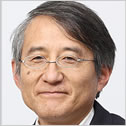
Osaka Univeristy
Kyo Inoue
- Research Topics
- optical communications, quantum communications
- Research Topics
- optical communications, quantum communications
Educational Background
- 1982B.S. degree from Tokyo University
- 1984M.S. degree from Tokyo Univerisity
Professional Experience
- 1984-2005Nippon Telegraph and Telephon (NTT)
- 2005-presentOsaka Univeristy
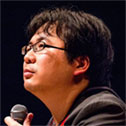
Tohoku University
Masayuki Ohzeki
- Research Topics
- Machine Learning, Statistical Mechanics, Quantum Annealing, Spin Glasses
- Laboratory HP
- http://www.smapip.is.tohoku.ac.jp/~mohzeki/index.html
- Research Topics
- Machine Learning, Statistical Mechanics, Quantum Annealing, Spin Glasses
- Laboratory HP
- http://www.smapip.is.tohoku.ac.jp/~mohzeki/index.html
Educational Background
- 2004.3Bachelor, Department of Physics, Tokyo Institute of Technology
- 2006.3Master, Department of Physics, Tokyo Institute of Technology
- 2008.9Doctor, Department of Physics, Tokyo Institute of Technology
Professional Experience
- 2008-2010Postdoctral researcher, Tokyo Institute of Technology
- 2010-2016Assistant Professor, Department of System Science, Kyoto University
- 2011-2012Dipartmento di Fisica, Universit'a di Roma, "La Sapienza" Postdoctoral Reseacher
- 2016-presentProfessor, Department of Physics, Tohoku University
Major Award
- 2012Young Scientist Award of the Physical Society of Japan
- 2016The Young Scientists’ Prize, The Commendation for Science and Technology by the Minister of Education, Culture, Sports, Science and Technology
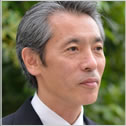
Osaka University
Tetsuo Ogawa
- Research Topics
- We are interested in solids, which are composed of many microscopic components, e.g., atoms and molecules. Such materials exhibit dramatic and interesting phenomena, such as phase transitions and nonlinear responses, due to interactions among their constituents. There remain many not yet understood phenomena that will require highly-sophisticated theoretical treatments beyond one-body approximations. Our group is trying to explain these exoctic phenomena using analytical and computational techniques. Specifically, we study nonequilibrium/dynamical/nonlinear responses of condensed matter, in particular, cooperative phenomena related to nonequilibrium/optically-excited states of quantum many-body systems. In other words, we explore coupled systems, where the fermionic (electronic) fields and the bosonic (photonic, phononic, excitonic, biexcitonic) fields are interacting with each other. One of our main subjects is the "electron-hole-photon (e-h-p) systems" in photoexcited semiconductors, where the Coulomb interaction leads to the formation of various phases such as the exciton gas, e-h plasma, e-h liquids, exciton-polariton Bose-Einstein condensation, and e-h-p BCS condensate. We perform systematic and quantitative surveys of such phases focusing on the following: (i) The phase diagram of e-h-p ensembles including quantum condensation and Mott transition. (ii) Evaluation of dynamical and coherence properties of light emitted from such e-h-p ensembles. (iii) Theoretical modeling of the dynamics of quantum phase transition of e-h-p ensembles.
- Research Topics
- We are interested in solids, which are composed of many microscopic components, e.g., atoms and molecules. Such materials exhibit dramatic and interesting phenomena, such as phase transitions and nonlinear responses, due to interactions among their constituents. There remain many not yet understood phenomena that will require highly-sophisticated theoretical treatments beyond one-body approximations. Our group is trying to explain these exoctic phenomena using analytical and computational techniques. Specifically, we study nonequilibrium/dynamical/nonlinear responses of condensed matter, in particular, cooperative phenomena related to nonequilibrium/optically-excited states of quantum many-body systems. In other words, we explore coupled systems, where the fermionic (electronic) fields and the bosonic (photonic, phononic, excitonic, biexcitonic) fields are interacting with each other. One of our main subjects is the "electron-hole-photon (e-h-p) systems" in photoexcited semiconductors, where the Coulomb interaction leads to the formation of various phases such as the exciton gas, e-h plasma, e-h liquids, exciton-polariton Bose-Einstein condensation, and e-h-p BCS condensate. We perform systematic and quantitative surveys of such phases focusing on the following: (i) The phase diagram of e-h-p ensembles including quantum condensation and Mott transition. (ii) Evaluation of dynamical and coherence properties of light emitted from such e-h-p ensembles. (iii) Theoretical modeling of the dynamics of quantum phase transition of e-h-p ensembles.
Educational Background
- 1985.3B.S. in Applied Physics, The University of Tokyo
- 1987.3M.S. in Applied Physics, The University of Tokyo
- 1988.9Department of Applied Physics, The University of Tokyo, Ph. D. course
- 1990.12Department of Applied Physics, The University of Tokyo, Ph. D. course
Professional Experience
- 1988-1990Assistant Professor, Department of Applied Physics, The University of Tokyo
- 1990-1993The Chief of Researcher, Basic Research Laboratories, NTT Corporation
- 1993-1996Associate Professor, Department of Applied Physics, Osaka City University
- 1996-2000Associate Professor, Department of Physics, Tohoku University
- 1997-2000Concurrent researcher, PRESTO, JST
- 2000-2001Concurrent Professor, Department of Physics, Tohoku University
- 2000-presentProfessor, Department of Physics, Osaka University授
- 2008-2014Guest Professor, Shanghai Jiao Tong University, PRC
- 2009-presentVice Director, Photon Pioneers Center, Osaka University
- 2010-presentVice Dean, Graduate School of Science, Osaka University
- 2010-2012Public Relations Division, Osaka University Central Office for Information Infrastructure, Osaka University
- 2012-presentAdvisers to the Executive Vice Presidents, Osaka University
- 2014-presentCouncilor, Osaka University
Major Award
- 1989JSAP Outstanding Achievement Award, The Japan Society of Applied Physics
- 2004Marubun Research Award, Marubun Research Promotion Foundation
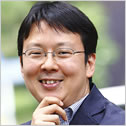
National Institute of Informatics
Ken-ichi Kawarabayashi
- Research Topics
- Discrete Math and Theoretical Computer Science, AI, Graph Mining, Graph Data Base.
- Research Topics
- Discrete Math and Theoretical Computer Science, AI, Graph Mining, Graph Data Base.
Educational Background
- 1998.3B.Sci. Mathematics, Keio University
- 2000.3M.Sci. Mathematics, Keio University
- 2001.3Ph.D. Mathematics, Keio University
Professional Experience
- 2003-2006Assistant Professor, Tohoku University
- 2006-2009Associate Professor, National Institute of Informatics
- 2009-presentProfessor, National Institute of Informatics
- 2012-presentResearch Director, JST ERATO Kawarabayashi Large Graph Project
Director, Global Research Center for Big Data Mathematics
Major Award
- 2001Takebe Prize (The Mathematical Society of Japan)
- 2003Kirkman Award (Institute of Combinatorics and Applications)
- 2003Inoue Research Award for Young Scientists
- 2006Young Researchers prize from Japan Society for the Promotion of Science
- 200617th International Symposium on Algorithms and Computation, Best Paper Award
- 2008IBM Japan Science prize in Computer Science
- 2009Inoue Research Award
- 2011Funai Research (special) Award
- 2013Best Paper Awards, ACM-SIAM Symposium on Discrete Algorithms (SODA)
- 20139th Japan Academy Medal (The Japan Academy)
- 20139th JSPS PRIZE (JSPS)
- 2015Spring Prize (The Mathematical Society of Japan)
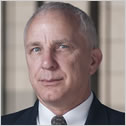
Stanford University
Martin Fejer
- Research Topics
- Nonlinear and guided-wave optics, microstructured ferroelectric and semiconductor media, and precision optical measurements, with current projects in optical signal processing, ultrafast optics, quantum optics, efficient generation of coherent visible and infrared radiation by waveguide and bulk optic frequency conversion, precision interferometry for gravitational wave detection, and characterization of materials with low-dissipation.
- Laboratory HP
- https://nlo.stanford.edu/
- Research Topics
- Nonlinear and guided-wave optics, microstructured ferroelectric and semiconductor media, and precision optical measurements, with current projects in optical signal processing, ultrafast optics, quantum optics, efficient generation of coherent visible and infrared radiation by waveguide and bulk optic frequency conversion, precision interferometry for gravitational wave detection, and characterization of materials with low-dissipation.
- Laboratory HP
- https://nlo.stanford.edu/
Educational Background
- 1977B.A. in Physics, Magna Cum Laude, Cornell University
- 1979M.S. in Applied Physics, Stanford University
- 1986Ph.D. in Applied Physics, Stanford University
Professional Experience
- 1979Physicist, Lawrence Livermore National Laboratory
- 1986-1989Acting Assistant Professor, Stanford University
- 1989-1993Assistant Professor, Stanford University
- 1994-2000Associate Professor (Research), Stanford University
- 2000-Professor of Applied Physics, Stanford University
- 2002-2005Chair of Applied Physics Department, Stanford University
- 2005-2010Senior Associate Dean, Natural Sciences, Stanford University
- 2016-PresentChair of Applied Physics Department, Stanford University
Major Award
- 1992Outstanding Teaching Award, Stanford University
- 1993Fellow: OSA
- 1998R. W. Wood Prize, Optical Society of America
- 2008Fellow: IEEE
- 2016National Academy of Sciences (elected)
- 2016Special Breakthrough Prize in Fundamental Physics (with LIGO collab.)
- 2017Princess of Asturias Award in Scientific Research (with LIGO collab.)













